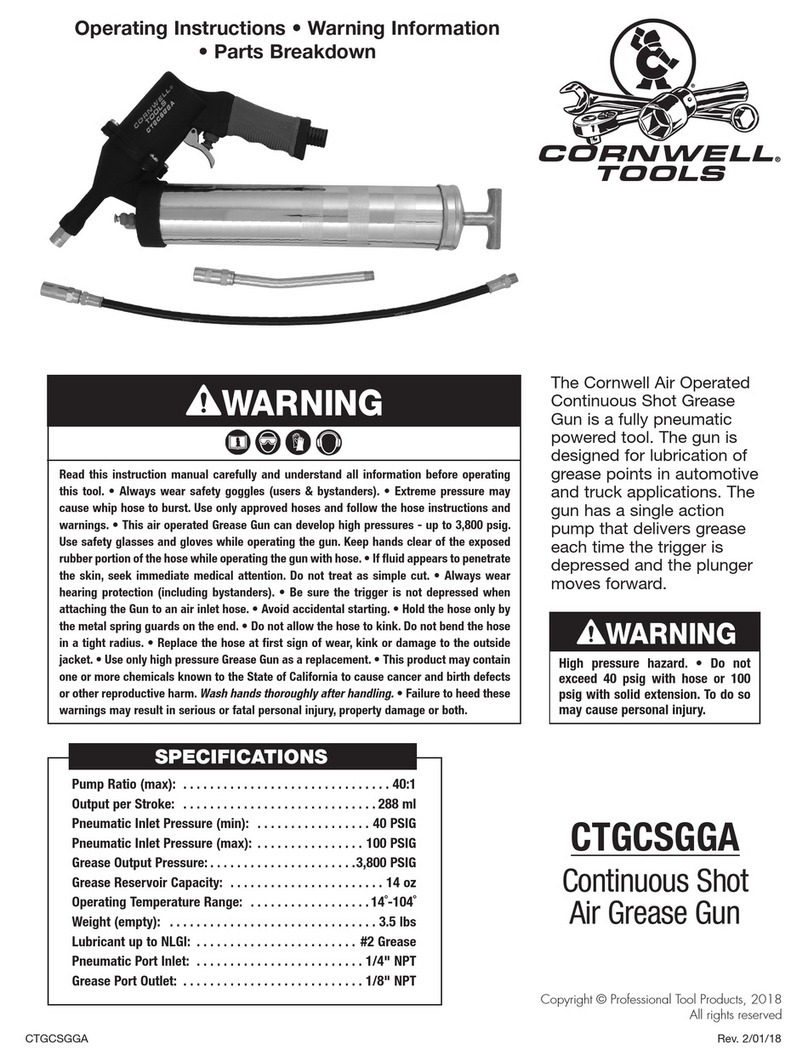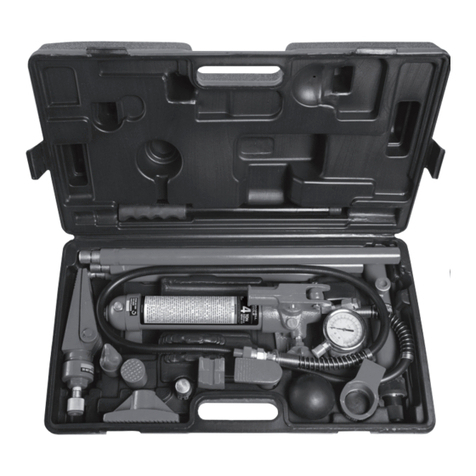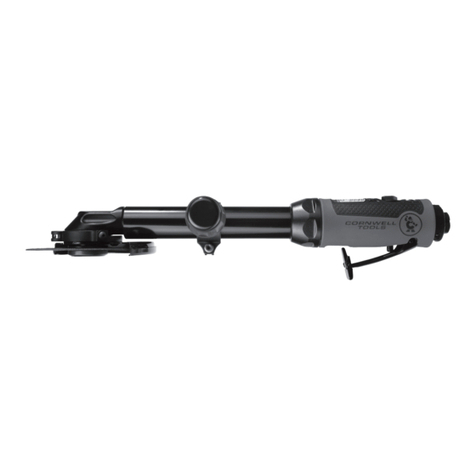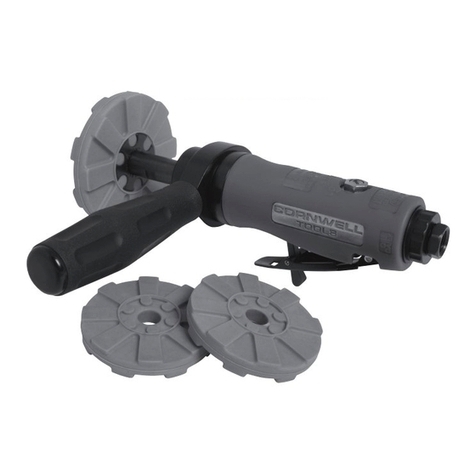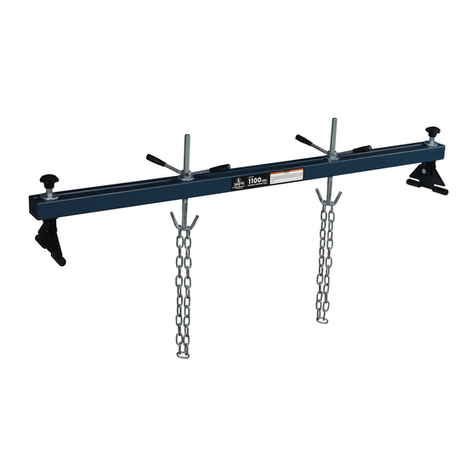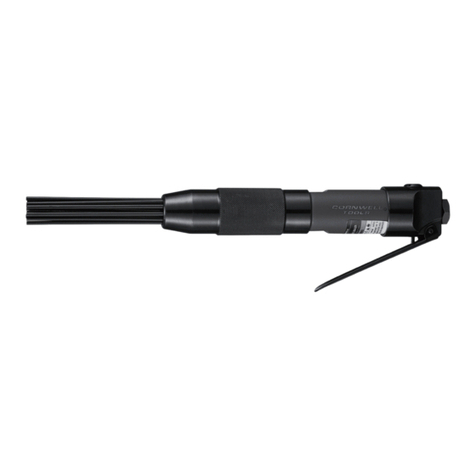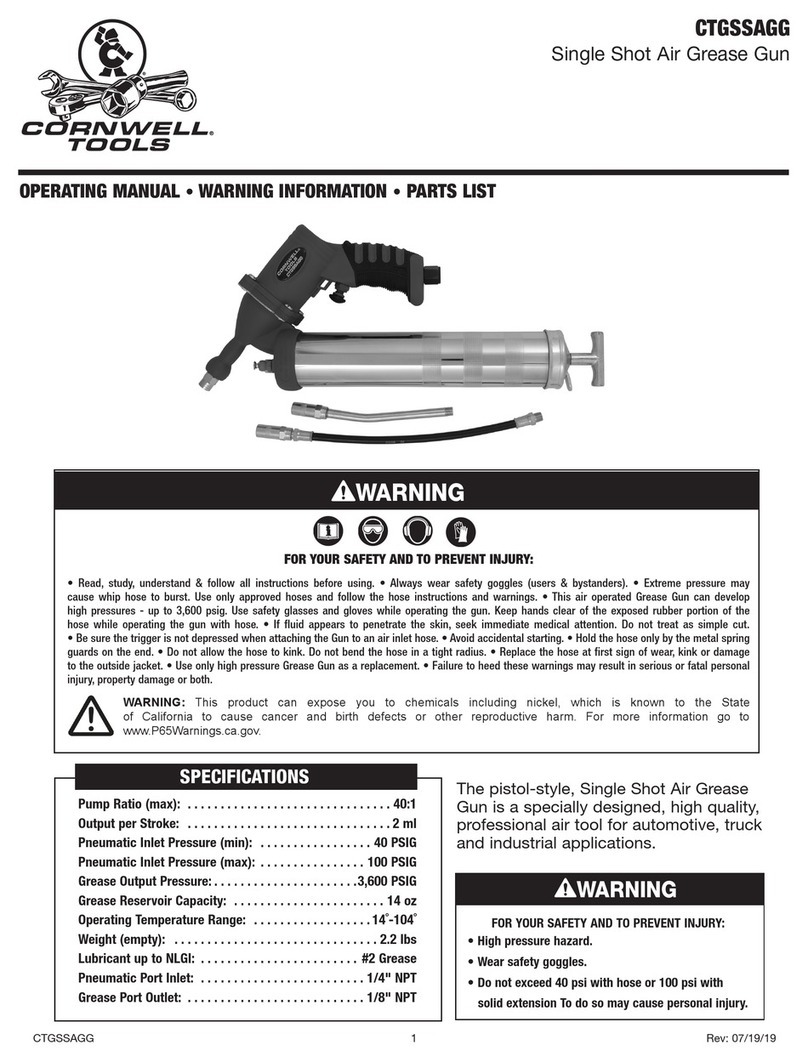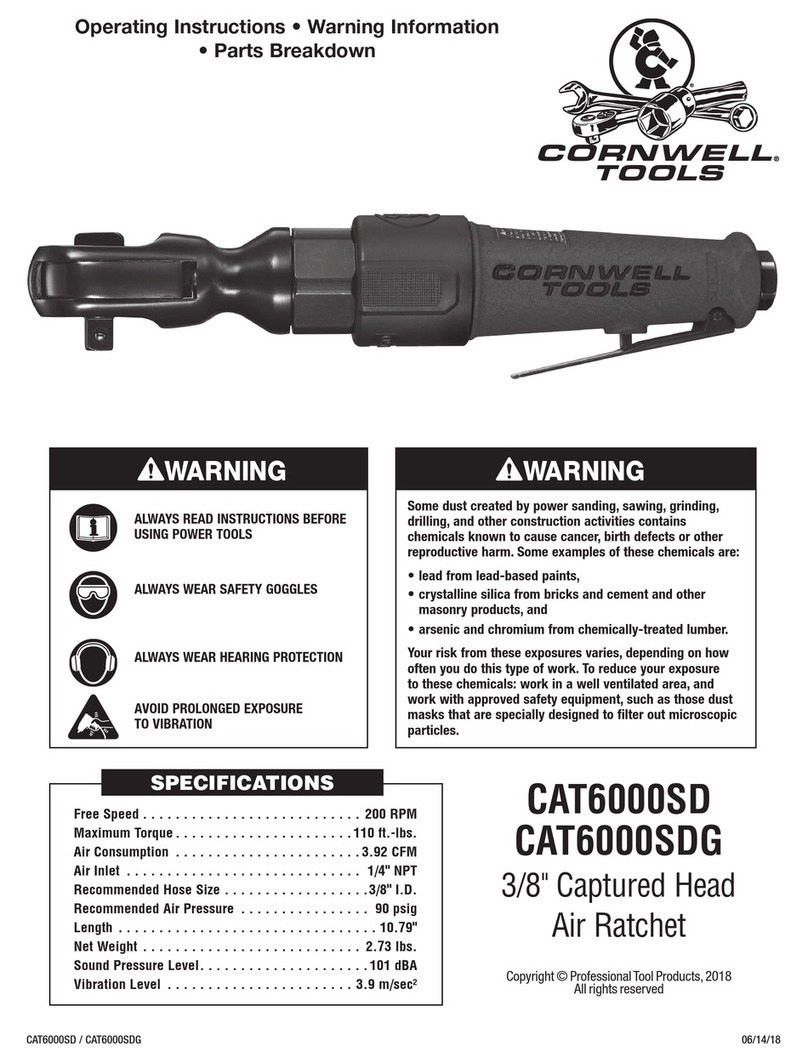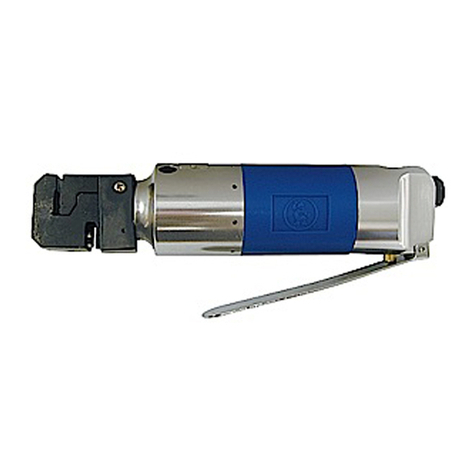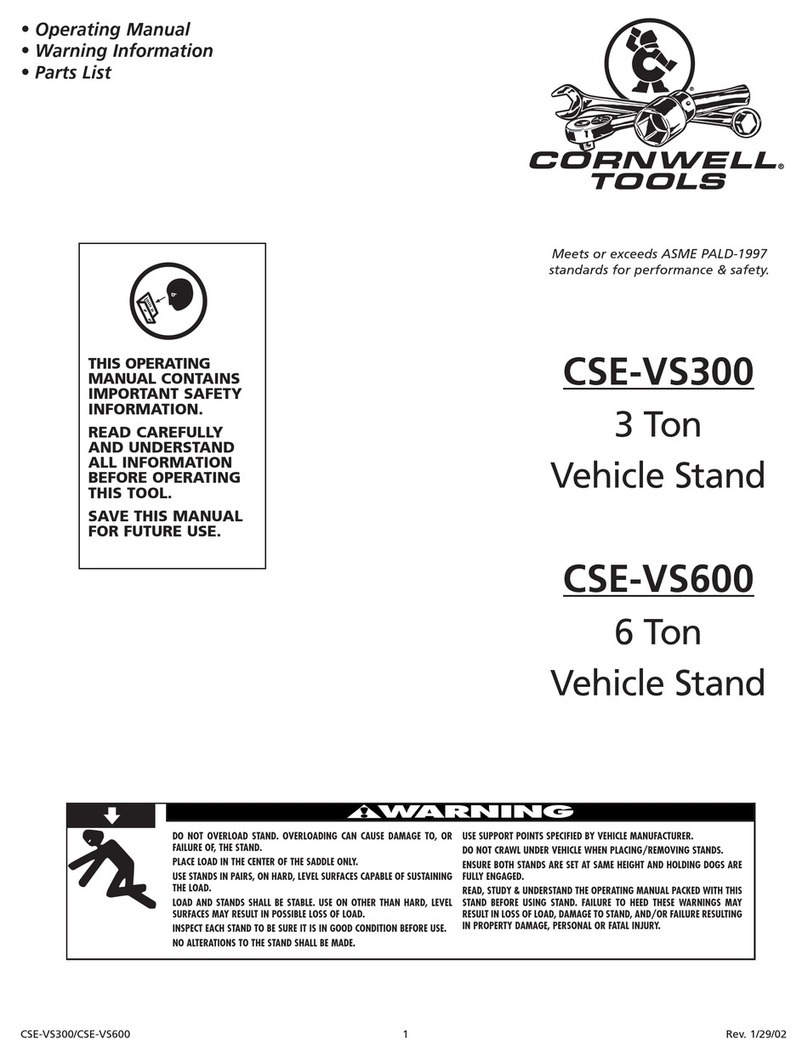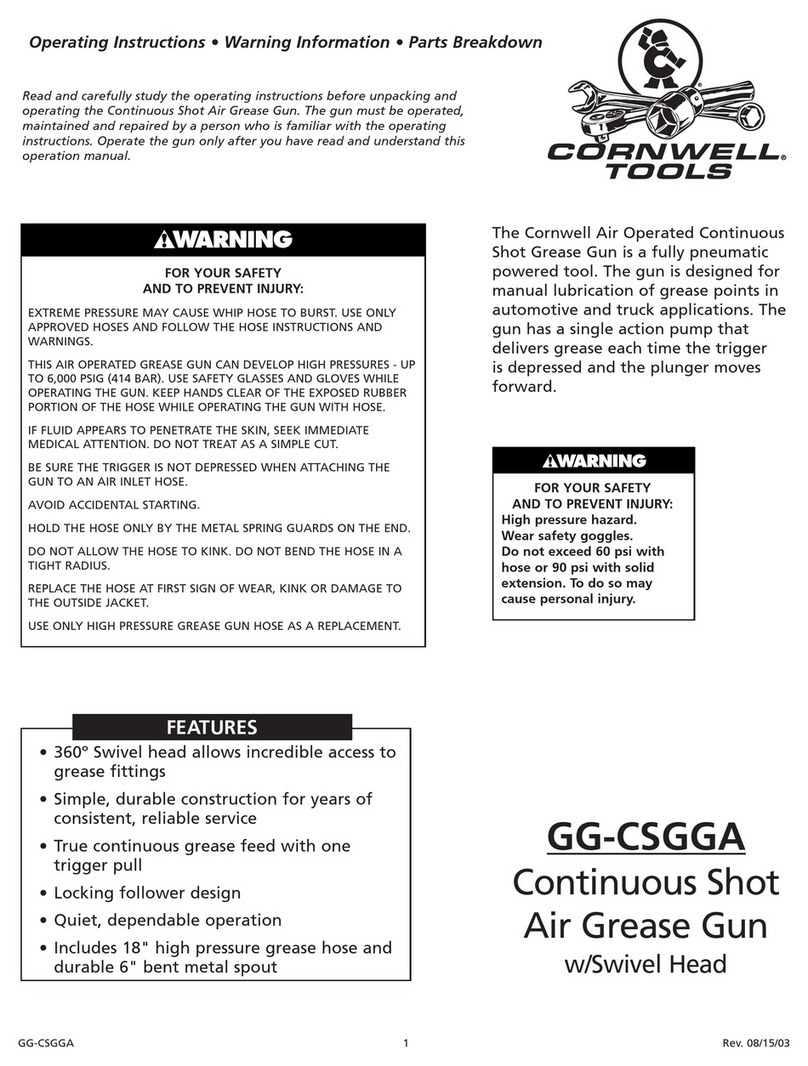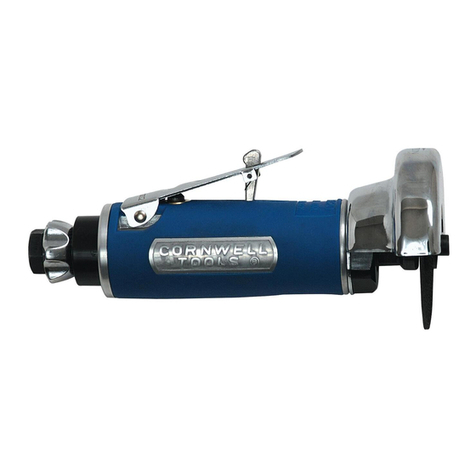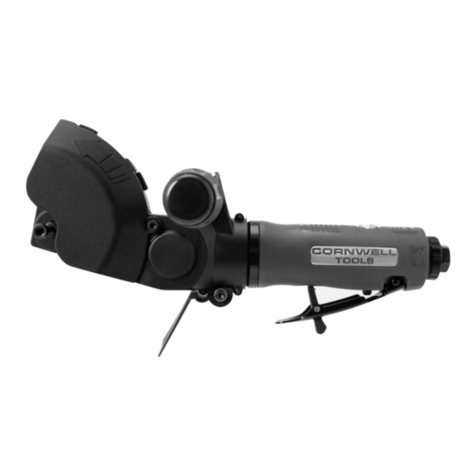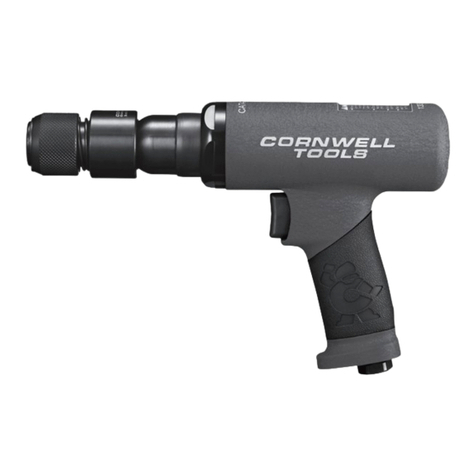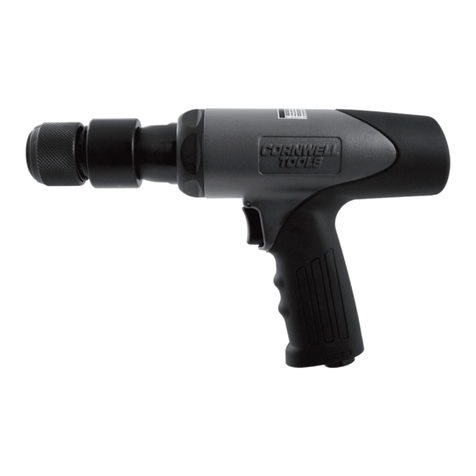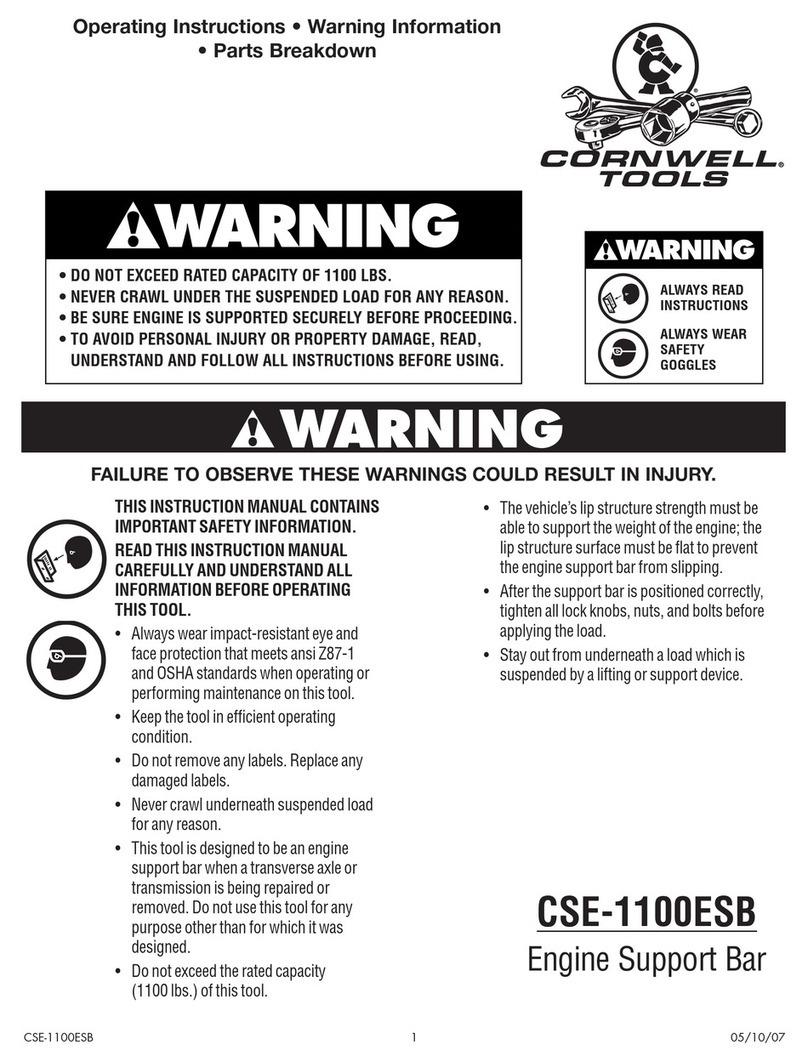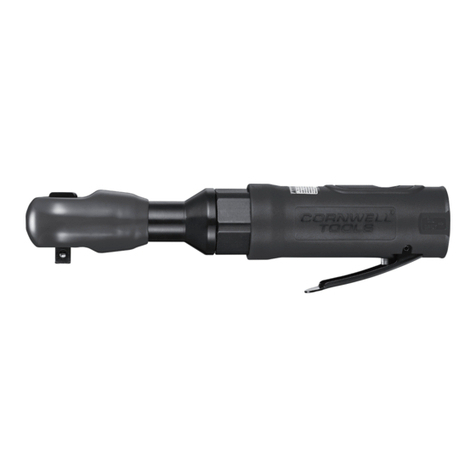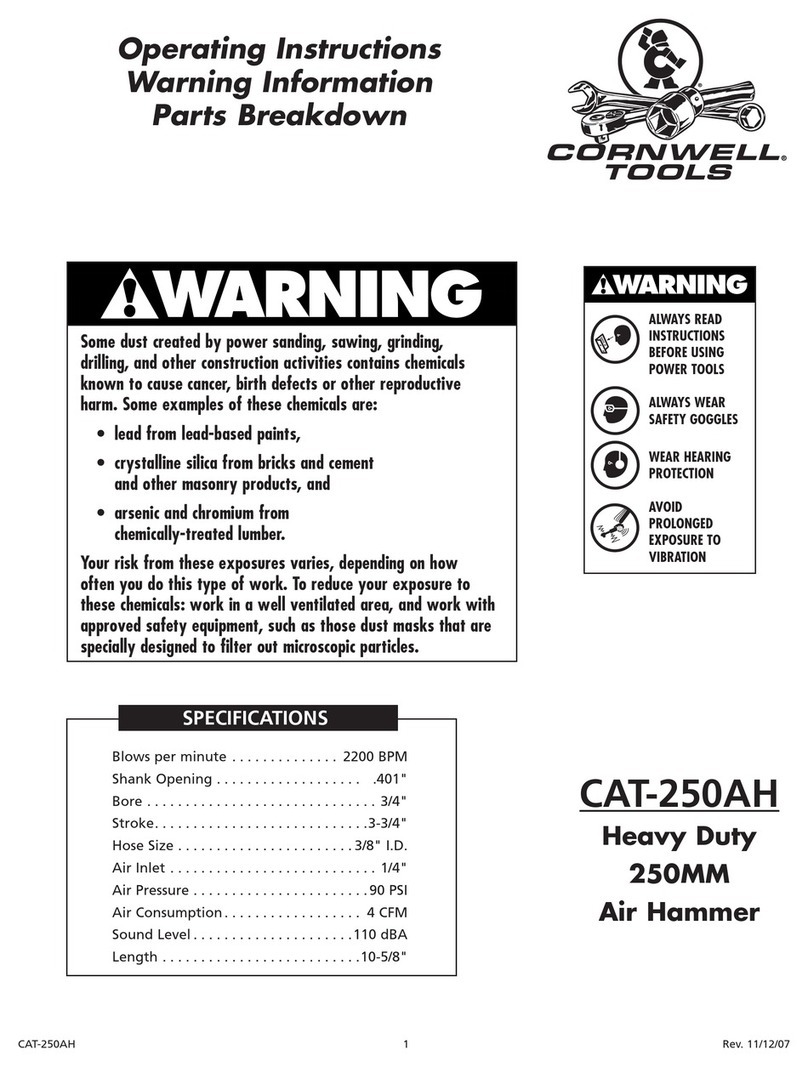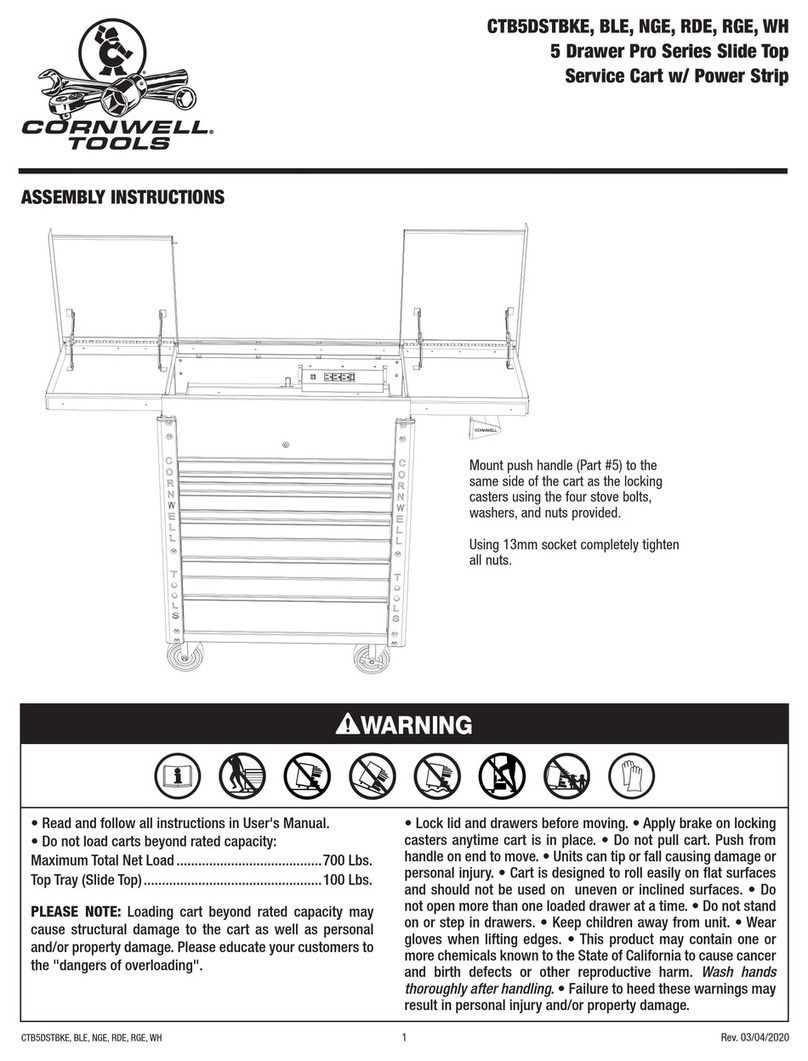
CATPR14 2 Rev. 06/02/09
This insTrucTion Manual conTains
iMporTanT safeTy inforMaTion.
read This insTrucTion Manual
carefully and undersTand all
inforMaTion Before operaTing This
Tool.
•Always operate, inspect and maintain
this tool in accordance with American
National Standards Institute Safety
CodeofPortableAirTools(ANSIB186.1)
and any other applicable safety codes
andregulations.
•For safety, top performance and
maximum durability of parts, operate
this tool at 90 psig 6.2 bar max air
pressure with 3/8" diameter air supply
hose.
•Always wear impact-resistant eye and
face protection when operating or
performing maintenance on this tool.
•Always wear hearing protection when
using this tool. High sound levels can
cause permanent hearing loss. Use
hearingprotectionasrecommendedby
your employer or OSHA regulation.
•Keep the tool in efficient operating
condition.
•Operators and maintenance personnel
must be physically able to handle the
bulk,weightandpowerofthistool.
•Air powered tools can vibrate in use.
Vibration, repetitive motions or
uncomfortablepositionsoverextended
periodsoftimemaybeharmfultoyour
handsandarms.Discontinueuseoftool
if discomfort, tingling feeling or pain
occurs. Seek medical advice before
resuming use.
•Air under pressure can cause severe
injury. Never direct air at yourself or
others. Always turn off the air supply,
drain hose of air pressure and detach
tool from air supply before installing,
removingoradjustinganyaccessoryon
this tool, or before performing any
maintenanceonthistool.Failuretodo
socouldresultininjury.Whiphosescan
cause serious injury. Always check for
damaged, frayed or loose hoses and
fittings, and replace immediately. Do
not use quick detach couplings at tool.
See instructions for correct set-up.
•Place the tool on the work before
starting the tool.
•Slipping, tripping and/or falling while
operating air tools can be a major cause
ofseriousinjuryordeath.Beawareof
excesshoseleftonthewalkingorwork
surface.
•Keep body working stance balanced
and firm. Do not overreach when
operating the tool.
•Anticipate and be alert for sudden
changesinmotionduringstartupand
operationofanypowertool.
•Do not carry tool by the hose. Protect
thehosefromsharpobjectsandheat.
•Do not lubricate tools with flammable
or volatile liquids such as kerosene,
dieselorjetfuel.
•Do not force tool beyond its rated
capacity.
•Do not remove any labels. Replace
damagedlabels.
FAILURE TO OBSERVE THESE WARNINGS COULD RESULT IN INJURY
WARNING - FOLLOW THESE RULES FOR SAFE OPERATION!
